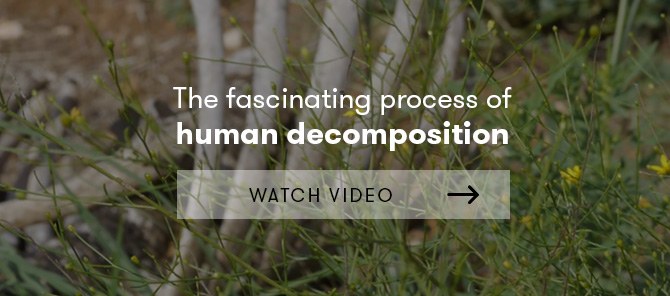Deadly secrets—the science of decomposition
Expert reviewers
Essentials
- Taphonomy is the study of organic remains from the time of death to the time of discovery.
- In natural conditions, human decomposition generally follows set processes.
- Understanding how insects, the environment and other external factors can affect decomposition may help forensic scientists assist police investigators.
- The Australian Facility for Taphonomic Experimental Research (AFTER) will study various aspects of how the human body decomposes in Australia’s unique climatic conditions.
The old adage ‘when you’re dead, you’re dead’ might not be quite correct. While whatever spark it was that made you ‘you’ may have gone, your body is still teeming with life both outside and within. Bacteria, fungi, parasites—they are all living and thriving off your death, and they can tell researchers and forensic investigators a lot about how, when and why you died.
If we can bear to think about it at all, most of us hope to die (at a ripe old age) quietly and painlessly in our own beds. If this occurs, our body will soon be whisked away by medical professionals or a funeral home to be refrigerated, stored, and prepared for disposal, typically by burial or cremation. But sometimes death arrives swiftly and unexpectedly due to trauma resulting from either an accident or a violent event. In these cases, the body may be deliberately moved, damaged, hidden, or simply not found for a period of time.
This can make the job of identifying a deceased individual—and confirming what happened to him or her—much harder. But the body, and its decomposition process, reveals a lot of clues that can help investigators establish key information such as a minimum time since death, the place of death and even, possibly, how the deceased met their unfortunate end. To help advance this research, several decomposition labs—colloquially known as ‘body farms’—have been developed. The most recent is right here in Australia, on the outskirts of western Sydney.
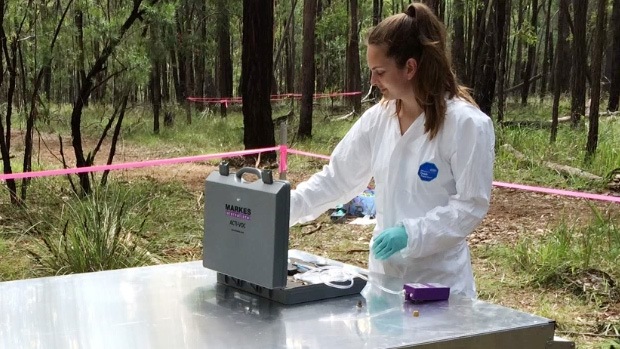
Taphonomy: not for the squeamish …
Taphonomy is the study of organic remains from the time of death to the time of discovery. It encompasses decomposition, post-mortem transport and burial, as well as other chemical, biological and physical activities which affect the remains of the organism.
Opened in 2016, the Australian Facility for Taphonomic Experimental Research (AFTER) is Australia’s first ‘body farm’. Here, scientists study how the human body deteriorates in our country’s unique climatic conditions, how different circumstances (whether the body is in the sun/shade, buried/surface, clothed/unclothed etc.) affect the decomposition process, and how the smell of decay changes over time. All of the bodies have been specifically donated to the facility for use in medical research.
The facility will be used by a variety of scientists including entomologists, anthropologists, biologists and chemists. Additionally, researchers and industry professionals from universities, forensic services, police and other scientific organisations will visit the facility on a regular basis to study the corpses and record in detail any changes.
So, what can these body farms teach us about death, and what sort of things do they study there?
Forensic anthropology and archaeology
Forensic anthropologists will be closely studying the arrivals at AFTER. They work to identify differently preserved human remains that may, for example, be decayed, mutilated, burned or scavenged. By studying the skeleton and any physical markers it may display, the forensic anthropologist can provide information about the deceased individual’s ancestry, age, sex and height. In their examination of the bones the forensic anthropologist may also be able to determine if the deceased shows evidence of skeletal trauma which may have occurred when the person was alive or around the time of death. They may also identify if the deceased person suffered from a particular disease that affects the skeleton (such as joint disease) or had undergone medical procedures (such as operations or implants). These additional details may also help to identify a body.
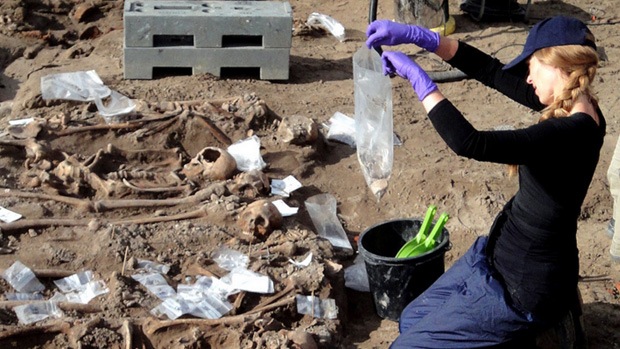
Sometimes the surrounding environment, the decomposition process and scavengers may have altered the skeleton in some way. Studying how bones are affected in the Australian climate and landscape, and the sort of elements and experiences they are exposed to, may provide new understandings for taphonomy and ultimately contribute to the forensic investigation. The AFTER facility will also allow researchers to study how textile and fibre degradation occurs in Australian conditions and the impact this preservation or degradation has on the decomposition of the body.
Forensic archaeologists are often called on to assist with the search for clandestine graves and, ultimately, the professional recovery of buried evidence (which may include not just a body, but also drugs, weapons and so on). The decomposition of a body affects the surrounding environment. Forensic archaeologists have expertise in what happens to a landscape when a body (or other evidence) is buried, and therefore can provide a wealth of information by examining the wider context of the death scene.
While a body on the surface of the ground will decompose in a certain way, a body buried in a shallow grave can also leave behind distinct environmental markers. These can be picked up by the trained eye.
Soil, for example, is more than just a pile of dirt, and can reveal a lot more than you may think. Firstly, investigators will check whether the soil has been disturbed.
They will look for any unusual depressions or indentations in the ground. As a body beneath the surface decomposes, the soil above it will slump further into the grave. The soil will also be looser and softer than the surrounding compacted soil, which can be another indicator of disturbed earth. Studying the soil colour, texture and consistency can also be used to determine if the soil has been previously disturbed.
Any soil collected will be tested by specialised forensic soil scientists. Analysing the chemical composition of the soil can determine if it is acidic or alkaline, or if the pH levels are unusual. The type of soil a body is buried in can alter its rate of decomposition—acidic soil can cause a body to break down up to three times faster than alkaline soil. This is useful information for investigators to keep in mind when searching for a body, particularly if they are seeking a body that has been missing for several years. The soil can also be analysed for both organic and inorganic content. The organic content can include not just vegetative matter but a wide range of invertebrates such as microbial communities and Collembola), which may provide clues on whether a body had at some point resided there.
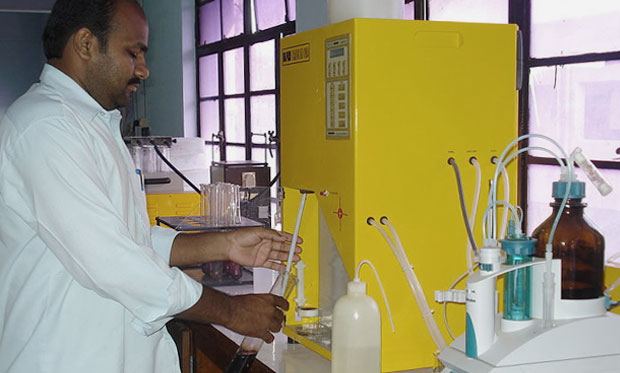
A decomposing body releases ammonium ions, which may also alter the pH level of the soil. A study undertaken at the University of Western Australia (albeit using animal flesh, not human) found that, after seven days in the ground, the pH level of acidic soil rose by over three units. Alkaline soil, however, recorded only slightly increased pH levels.
Forensic archaeologists also look at plant growth or death, and at changes in appearance to an area. These clues can help investigators obtain information regarding the presence of a possible grave.
As the human body breaks down it releases large amounts of nitrogen and phosphate into the surrounding soils. This can initially kill off the plant life in the close vicinity, though within several years those same chemicals prompt a surge in growth, resulting in unusually green and robust patches of botanic life. Studying how the decomposition process may alter the Australian environment is one of the tasks that will be researched at AFTER.
Forensic archaeologists also know that nothing in nature is straight. Looking for straight lines (such as a cut grave) can indicate that something is human made.
Forensic archaeologists assist in the processing of scenes of mass fatality, such as sites of mass graves, airline crashes or acts of terrorism. This line of study is being pursued at AFTER, with Australian scientists using the site to simulate a mass grave such as those found throughout the world following periods of political, religious or ethnic violence such as in Argentina, Guatemala, Spain, the former Yugoslavia, Iraq and Syria. Dr Soren Blau, a forensic anthropologist who will head the study, said, ‘we know that with one individual [human decomposition] is complex, but when you add many individuals, the complexity becomes even greater’. Further understanding the decomposition process of commingled individuals in mass graves and the impact multiple bodies have on the surrounding environment may help forensic archaeologists detect and classify future mass grave sites.
The project will place six individuals in one grave and three more in another, in conditions similar to those used by war criminals. One grave will be created with machinery and the other will be dug by hand in order to replicate real-world scenarios.
It is hoped that the findings from the research—which will take three years—will assist investigators locate mass graves and researchers to examine and assess remains, ultimately aiding the prosecution of war criminals.
Forensic entomology
Forensic entomologists study insect and other arthropod biology to aid legal investigations, often into criminal offences. The main focus of their work is to provide an estimate of the minimum time since death. Forensic entomologists may also be able to provide information about whether the body has been moved after death (for instance if it is found with an insect species present that is out of its natural geographical distribution) or been otherwise disturbed, the position of wound sites, and whether drugs or poison were involved.
A corpse generally progresses through five stages of decomposition—fresh, bloat (autolysis), active decay (putrefaction), advanced decay and skeletonisation. While these stages can vary in length depending on the conditions the corpse is exposed to, each phase attracts specific types of insects (for example flies come first, then beetles).
If a body is found within a few weeks, the age and development of maggots can be used to estimate the time that has elapsed since death. While external conditions (heat, cold, rainfall) can affect the growth rate of maggots, they generally follow a set developmental schedule. So while flies might not be wanted at a family picnic, for forensic entomologists the presence of the common insect on a body is both welcome and valuable. Far from being a nuisance, they can provide important clues about when a person died.
Flies—particularly house flies (Muscidae) and blow flies (Calliphoridae)—can land on a body within seconds and be laying eggs within minutes. They are attracted to the odour given off by the corpse as decomposition progresses, with some flies able to pick up the scent of death from 16 kilometres away.
They lay their eggs in orifices such as the mouth, nose, ears or open wounds. A single fly can deposit up to 250 eggs, which can hatch within 24 hours. The resulting first-stage maggots feed on the body for several hours before moulting. They then feed again until they are large enough to move away from the body to pupate, growing into adult flies, which repeat the cycle.
A third family of fly, the flesh fly (Sarcophagidae) arrives slightly later, but compensates for its tardiness by birthing live maggots rather than eggs.
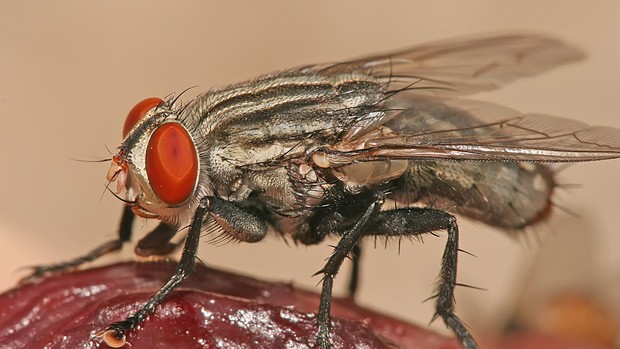
By collecting and studying the mature flies, pupal casings and maggots on and around a corpse, and using their knowledge of the stages and duration of an insect’s life cycle, forensic entomologists can work out how long ago the adult flies laid their eggs on the corpse. When correlated against weather patterns, this gives them a framework for working out the minimum amount of time a body has been dead (known as the minimum post-mortem interval).
This method is not conclusive however, as various factors can stop or delay the arrival of flies and their offspring, including weather, clothing, the relocation of the body (from a closed house, for example), even the activities of other insects.
Another method used by forensic entomologists is studying insect succession. As the body decays, it goes through physical, biological and chemical changes. Each stage attracts a different species of insect. So if a body is found more than a month after death, when many of the maggots and flies have already moved on, studying the insects that have moved in to take their place can be helpful in estimating the time since death.
Beetles are generally next to arrive on the body. As they have chewing mouthparts they are able to consume the tougher parts that the flies have left behind. There are several different beetle species that live off the dead (either by consuming the corpse itself or those that are feeding on it), such as rove beetles (Staphylinidae) and hister beetles (Histeridae). Like flies, they go through complete development (larval stage to adult form), so studying their development can be useful in determining how long they have been on a body. Later-arriving species such as the hide beetle and the ham beetle (Necrobia rufipes) feed on the toughened skin and tendons. They are known as specialist scavengers.
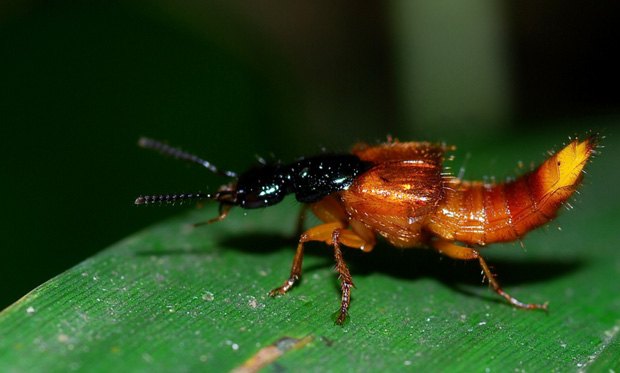
Of course, insects don’t politely ‘take turns’. They are often present at the same time, and colonise different parts of the body. Other predatory insects, such as ants, wasps, mites and spiders, also arrive to feast on those insects (or their larvae) who have reached the body before them. Once again, this method isn’t foolproof. Many factors can affect which insects arrive, when they arrive, and how quickly their offspring grow, including habitat, weather conditions and soil type.
Insects do an amazing job of devouring the soft tissue of a corpse. After approximately 12 months, they will have left little behind. Still, the evidence of their work and lives may be of some use to forensic entomologists. Empty pupal casings remaining on or near a body persist for years—pupae have even been retrieved from Egyptian mummies. Once the species is identified, these can indicate the time of year (the season) of death, which may help to narrow the time frame of investigation.
Forensic chemistry
If you’ve ever been driving along and caught the whiff of roadkill, you’ll know that death stinks.
The smell of a decomposing human body has been described as rank and pungent mixed with a tinge of sickening sweetness. Despite its unpleasantness, the odours given off during the decomposition process can be incredibly helpful. And some researchers now claim that decomposing human bodies have a unique smell, which is different to that of other rotting animals.
A 2015 study aimed to identify the volatile organic compounds released during decomposition. The researchers studied six human remains and 26 animal remains over a six-month period. Using advanced equipment they were able to identify a total of 452 compounds.
Many of the compounds were the same across species. But researchers identified eight compounds (ethyl propionate, propyl propionate, propyl butyrate, ethyl pentanoate, pyridine, diethyl disulfide, methyl (methylthio)ethyl disulfide and 3-methylthio-1-propanol) that were specific to human and pig remains.
They were also able to distinguish between the human and pig remains due to the presence of five esters (3-methylbutyl pentanoate, 3-methylbutyl 3-methylbutyrate, 3-methylbutyl 2-methylbutyrate, butyl pentanoate and propyl hexanoate). Interestingly, these five esters (produced via the degrading of fat tissues, muscles and carbohydrates) are also responsible for the strong, intense smells emitted by certain fruits such as raspberries and pineapples. The smell of human death, it seems, is just a little bit fruity.
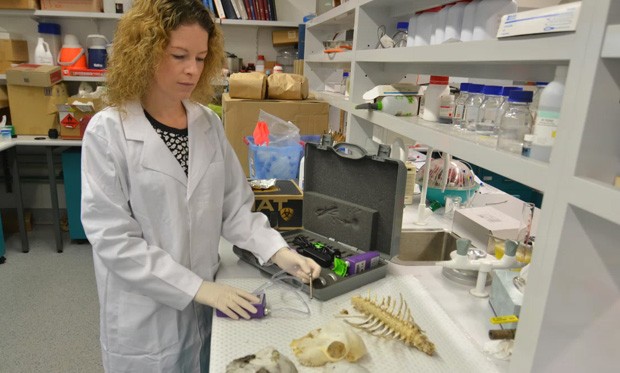
However, despite identifying compounds specific to humans and pigs, the researchers noted that further investigation was needed to search for ‘human-specific’ markers.
The findings from the study, while interesting, are limited in some ways. Firstly, the researchers used human body parts, rather than whole bodies. Secondly, the remains were tested in a lab-controlled environment, so they were not exposed to external factors such as light, heat, moisture or insect activity, which may have altered the results.
Professor Shari Forbes, head of the new AFTER centre, will be using the facility to build on this study. She will investigate the chemical processes that occur on whole human bodies during natural decomposition in an outdoor environment, and use this information to identify an accurate biochemical signature.
The chemical ‘signature’ of death changes with each stage of decomposition. Accurate recordings of these different chemical markers may be put to a number of different uses. They may be used to train police cadaver-detection dogs (which will go on to work on forensic and mass-disaster investigations), or to assist in the development of portable detection devices that can distinguish the smell of ‘death’.
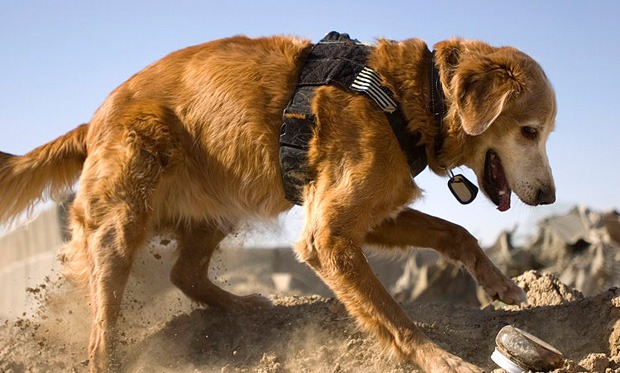
Identifying the chemical signature of death is important work, but forensic chemists may also be able to help investigators determine the cause of death. Using a variety of high-performance machines, they assist in the identification of specific substances and materials found in or on the body or at a crime scene, such as drugs, alcohol or a fire accelerant (such as petrol or kerosene). This information can provide direction for avenues of investigation, or confirm or reject the suspicions of investigators in relation to a found material.
Forensic chemists will also be looking closely at how textile and fibre degradation occurs in Australian conditions. They will be studying the material itself, rather than its impact on the body or skeleton.
Conclusion
As much as we might like to ignore it, death, and what happens afterwards, are undeniable facts of life. All living things die, so it makes sense, as unpleasant as it may be, to try and better understand the various processes involved.
The data collected from the AFTER facility will be able to provide validated scientific methods and results that can be used by police and forensic investigators in their work. Because each death scene is unique—both in terms of the body (including its size, age and trauma suffered) and the circumstances it is placed in (such as the environment, weather, clothing and position)—the science is not infallible. However, by improving our knowledge of the human decomposition process, and how it is affected by and affects the flora and fauna around it, we may be able to help answer questions that can then benefit the living.






